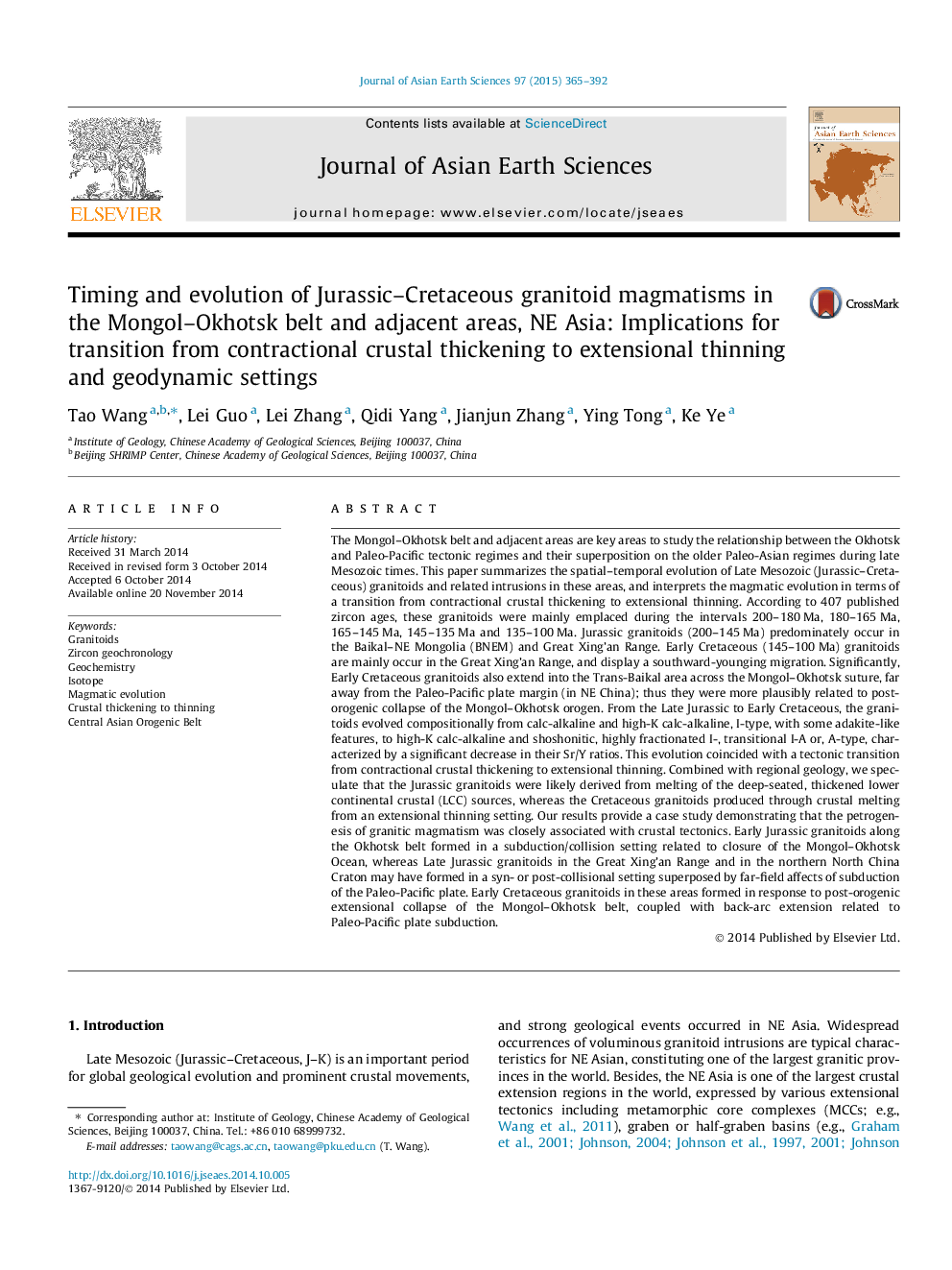| کد مقاله | کد نشریه | سال انتشار | مقاله انگلیسی | نسخه تمام متن |
|---|---|---|---|---|
| 4730444 | 1356758 | 2015 | 28 صفحه PDF | دانلود رایگان |

The Mongol–Okhotsk belt and adjacent areas are key areas to study the relationship between the Okhotsk and Paleo-Pacific tectonic regimes and their superposition on the older Paleo-Asian regimes during late Mesozoic times. This paper summarizes the spatial–temporal evolution of Late Mesozoic (Jurassic–Cretaceous) granitoids and related intrusions in these areas, and interprets the magmatic evolution in terms of a transition from contractional crustal thickening to extensional thinning. According to 407 published zircon ages, these granitoids were mainly emplaced during the intervals 200–180 Ma, 180–165 Ma, 165–145 Ma, 145–135 Ma and 135–100 Ma. Jurassic granitoids (200–145 Ma) predominately occur in the Baikal–NE Mongolia (BNEM) and Great Xing’an Range. Early Cretaceous (145–100 Ma) granitoids are mainly occur in the Great Xing’an Range, and display a southward-younging migration. Significantly, Early Cretaceous granitoids also extend into the Trans-Baikal area across the Mongol–Okhotsk suture, far away from the Paleo-Pacific plate margin (in NE China); thus they were more plausibly related to post-orogenic collapse of the Mongol–Okhotsk orogen. From the Late Jurassic to Early Cretaceous, the granitoids evolved compositionally from calc-alkaline and high-K calc-alkaline, I-type, with some adakite-like features, to high-K calc-alkaline and shoshonitic, highly fractionated I-, transitional I-A or, A-type, characterized by a significant decrease in their Sr/Y ratios. This evolution coincided with a tectonic transition from contractional crustal thickening to extensional thinning. Combined with regional geology, we speculate that the Jurassic granitoids were likely derived from melting of the deep-seated, thickened lower continental crustal (LCC) sources, whereas the Cretaceous granitoids produced through crustal melting from an extensional thinning setting. Our results provide a case study demonstrating that the petrogenesis of granitic magmatism was closely associated with crustal tectonics. Early Jurassic granitoids along the Okhotsk belt formed in a subduction/collision setting related to closure of the Mongol–Okhotsk Ocean, whereas Late Jurassic granitoids in the Great Xing’an Range and in the northern North China Craton may have formed in a syn- or post-collisional setting superposed by far-field affects of subduction of the Paleo-Pacific plate. Early Cretaceous granitoids in these areas formed in response to post-orogenic extensional collapse of the Mongol–Okhotsk belt, coupled with back-arc extension related to Paleo-Pacific plate subduction.
Journal: Journal of Asian Earth Sciences - Volume 97, Part B, 1 January 2015, Pages 365–392